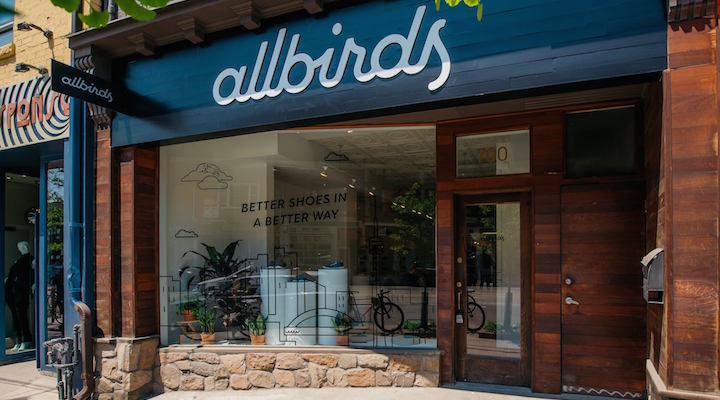Global footwear retailer Allbirds has continued to struggle since going public in 2021, with sales slowing and financial losses widening. But does this financial performance signify a shift in consumer preferences, or is it primarily due to a series of decisions made by the company? The certified B-Corp brand – which specialises in woollen shoes, and designed what was dubbed the world’s first zero-carbon shoe – recently announced a net loss of over US$35 million for the first quarter of 20
of 2023, up from US$21.9 million in the year prior.
Sales fell by 13.4 per cent over the same period to US$65.5 million, and the brand incurred an adjusted EBITDA loss of US$21.7 million. Its gross margin declined from 51.9 to 40.1 per cent.
The financial results followed the termination of 21 staff members this month – representing nine per cent of the brand’s corporate workforce – and a management reshuffle, with co-founder and then-co-CEO Tim Brown moving to a non-executive role.
Following Allbirds’ performance in the prior quarter – which also saw sales and share prices fall – CEO Joseph Zwillinger said it was due to missteps, including the brand losing sight of the offering that its core customers fell in love with.
“[With] limited resources, we expanded our marketing dollars and our product-development resources on those adjacencies,” Zwillinger reportedly told investors.
“[We] didn’t do as much work on embellishments of the core franchise and revitalising those franchises to keep them extremely relevant with the core consumer.”
“Tech bros” moving on
Anna Forster, co-founder and chief sustainability strategist at The Purpose Agents, believes that Allbirds’ financial performance does not represent a consumer shift away from sustainability.
Rather, Forster told Inside Retail that the changing economic and market environment, rising operational costs and specific circumstances and challenges faced by the company have led to a reduction in sales, and reduced profitability.
In the brand’s heyday, she said that Allbirds’ wool runners were a way for people to convey that they cared about sustainability, and were willing to wear their values. This potentially peaked when US President Barack Obama was regularly snapped donning a pair of Allbirds shoes across 2019 and 2020.
Forster noted that Allbirds’ initial customer base wasn’t necessarily primarily focused on sustainability. Rather, she classed the audience as “tech bros” who were concerned with status.
At one point, the growth of this customer segment was “meteoric.” But she observed that early adopters have moved on because “they felt the brand was worn too far and wide.”
Forster explained that this phenomenon tends to occur among rapidly growing brands, with very hyped products, that operate in a niche market segment.
“Allbirds branched out and expanded extremely quickly into product categories well beyond their core DNA – such as running and performance shoes and apparel – with limited success,” Forster said.
“The new customer segments targeted did not connect [and] resulting sales were underwhelming.”
Avoiding growth at all cost
According to Forster, challenging economic conditions and down cycles have placed immediate pressure on product prices across the industry. However, she maintained that this pressure isn’t threatening the long-term consumer shift toward sustainability within the fashion industry.
While the disparity in the shopping habits of low- and high-income households has become more pronounced in recent months, Forster believes that Allbirds’ target audience is not especially price-conscious, with more affluent customers less affected by inflation.
Pointing to two successful companies of a similar size and calibre as Allbirds, she said that there were still opportunities for sustainable footwear companies to perform well.
These include shoe company Veja – which has been “profitable from day one” – and clothing brand Reformation. The latter has reportedly doubled its sales over a four-year period and expanded to different categories without compromising its core offering.
“Both Veja and Reformation have set themselves apart by honing in on customer-focused product development and profitability instead of growth at all costs,” Forster said.
“[They] are great examples of brands with a sustainability focus doing well.”
Evolving from a niche customer base.
There are lessons that can be taken away from Allbirds’ recent financial challenges.
According to Forster, Allbirds continued with a rapid growth approach, while still relying on a specific customer group and a specialised offering of wool runners.
She reasoned that trying to diversify and enter new customer segments is a challenging proposition for brands that are known among a certain group, and for a specific product.
“Make no mistake, continuing the early success of an initial niche customer segment that is captured [and] exhausted, or starting to move on, is an extremely difficult thing to do,” she said.

